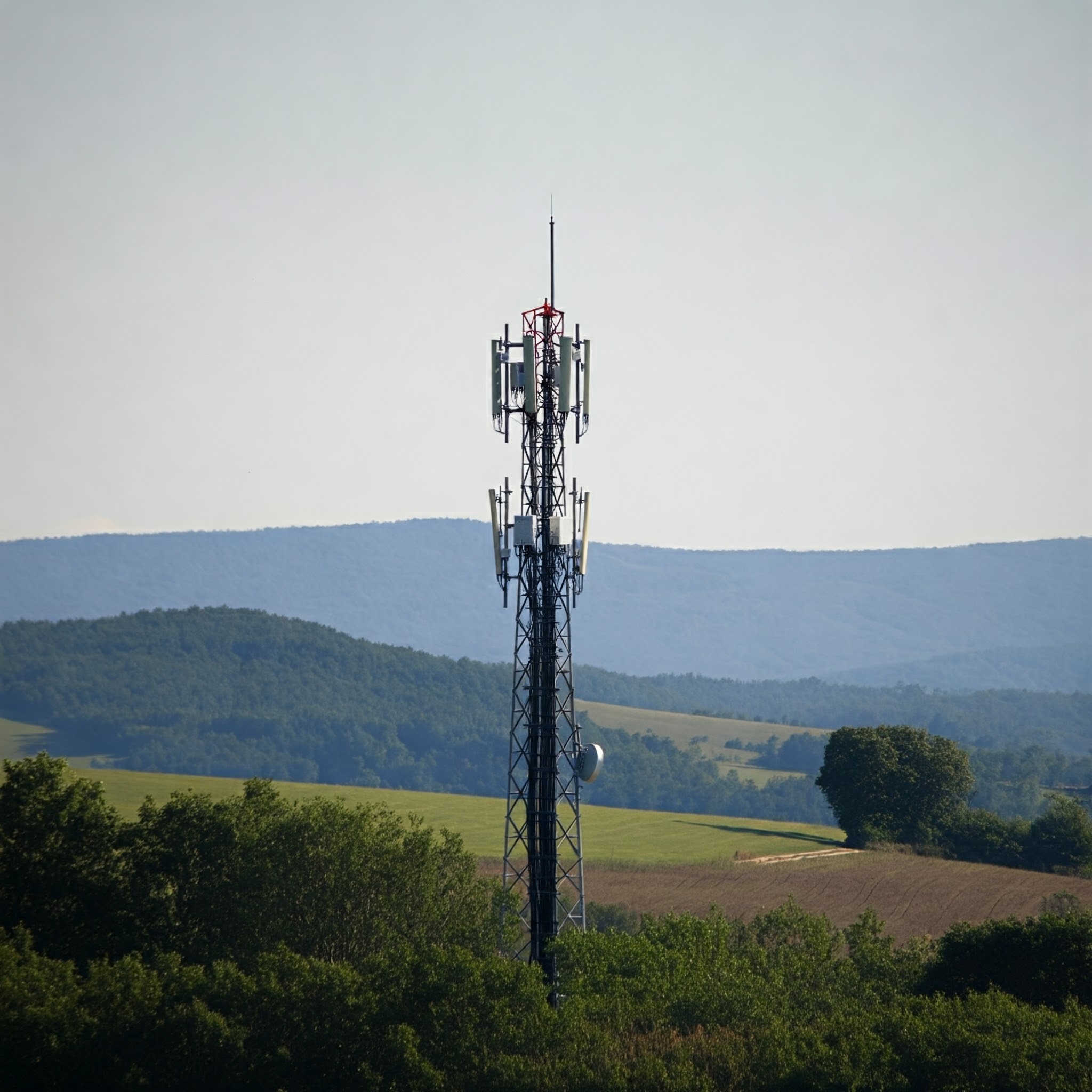Straight Talk is a popular mobile virtual network operator (MVNO) known for offering affordable cell phone plans without compromising on nationwide coverage. But have you ever wondered how they manage to provide such extensive service without owning any cell towers? The answer lies in their strategic partnerships with the major players in the US wireless industry.
What cell towers does Straight Talk use? Essentially, they leverage the existing infrastructure of established carriers. This means that your Straight Talk phone could be utilizing cell towers owned by Verizon, AT&T, or T-Mobile, depending on your location and the specific Straight Talk plan you’ve chosen.
This article delves into the intricacies of Straight Talk’s network access, exploring the benefits and potential drawbacks of this approach, and providing you with the information you need to make informed decisions about your wireless service.
Understanding MVNOs and Network Sharing

Before we dive into the specifics of Straight Talk’s network usage, let’s clarify what it means to be an MVNO.
-
MVNOs (Mobile Virtual Network Operators): These companies don’t own the physical infrastructure (cell towers, base stations, etc.) that supports wireless communication. Instead, they lease network access from major carriers (like Verizon, AT&T, and T-Mobile) at wholesale rates. This allows them to offer competitive pricing to consumers.
-
Network Sharing: This is the practice where multiple wireless providers utilize the same physical network infrastructure. In the case of Straight Talk, this means their customers can connect to towers owned by different carriers, expanding their coverage footprint.
What cell towers does Straight Talk use? Unveiling the Network Partners
Straight Talk, owned by TracFone Wireless (a subsidiary of Verizon), primarily utilizes the Verizon network. This grants them access to one of the most extensive and reliable 4G LTE and 5G networks in the United States. However, Straight Talk also has agreements with AT&T and T-Mobile, allowing them to offer broader coverage and cater to diverse customer needs.
- Verizon: Known for its strong coverage, particularly in urban and suburban areas, Verizon provides a solid foundation for Straight Talk’s service.
- AT&T: Offers a comparable network with widespread coverage, especially in rural regions.
- T-Mobile: While their overall coverage might be slightly less extensive than Verizon or AT&T, T-Mobile excels in providing fast data speeds and innovative services.
The specific network you connect to with your Straight Talk phone depends on several factors:
- Your Location: The strength of each carrier’s signal varies geographically. Straight Talk automatically connects you to the strongest available signal in your area.
- Your Straight Talk Plan: Some Straight Talk plans might be specifically designed for use on a particular network (e.g., Verizon-only plans).
- Network Congestion: During peak usage times, Straight Talk may prioritize access to certain networks to ensure optimal performance for its customers.
Benefits of Straight Talk’s Network Approach
By utilizing the infrastructure of multiple major carriers, Straight Talk offers several advantages to its customers:
- Wide Coverage: Access to a combination of networks translates to a broader coverage footprint, ensuring reliable service across a larger geographical area.
- Competitive Pricing: Leasing network access at wholesale rates allows Straight Talk to offer affordable plans compared to the major carriers.
- Flexibility: Customers can potentially choose plans tailored to specific networks, catering to their individual needs and preferences.
- No Contracts: Like most MVNOs, Straight Talk offers no-contract plans, providing flexibility and freedom to switch providers if needed.
Potential Drawbacks to Consider
While Straight Talk’s multi-network approach offers numerous benefits, there are also potential drawbacks to be aware of:
- Network Prioritization: As an MVNO, Straight Talk customers may experience lower network priority compared to direct customers of the major carriers. This could potentially lead to slower speeds during peak usage times.
- Limited Control: Straight Talk relies on its partner networks for infrastructure maintenance and upgrades. This means they have limited control over network quality and expansion.
- Customer Support: While Straight Talk provides customer support, resolving complex network issues might involve coordination with the underlying network provider.
- Compatibility: Not all phones are compatible with all three networks. Ensure your device supports the frequencies used by the carrier you intend to utilize.
How to Determine Which Network Your Straight Talk Phone Uses
There are a few ways to identify which network your Straight Talk phone is currently connected to:
- Check Your Phone’s Settings: Depending on your device, you might find network information within the settings menu. Look for terms like “Network Operator” or “Mobile Network.”
- Use a Field Test Mode: Many smartphones have a field test mode that displays detailed network information, including the carrier ID.
- Contact Straight Talk Customer Support: They can provide information about your current network connection and assist with any related queries.
Tips for Optimizing Your Straight Talk Experience
To make the most of your Straight Talk service, consider these tips:
- Check Coverage Maps: Before signing up, review the coverage maps for Verizon, AT&T, and T-Mobile in your area to ensure adequate signal strength.
- Choose the Right Plan: Select a Straight Talk plan that aligns with your network preferences and data usage needs.
- Monitor Network Performance: If you experience consistent issues with speed or connectivity, contact Straight Talk customer support to explore potential solutions.
- Keep Your Phone Updated: Ensure your device’s software is up-to-date to optimize network compatibility and performance.
In Conclusion
Straight Talk’s strategic partnerships with major carriers like Verizon, AT&T, and T-Mobile enable them to offer a compelling combination of affordability, coverage, and flexibility. By understanding how Straight Talk utilizes these networks, you can make informed choices about your wireless plan and optimize your mobile experience. Remember to consider your individual needs, location, and the potential benefits and drawbacks of each network when making your decision.
لا تعليق